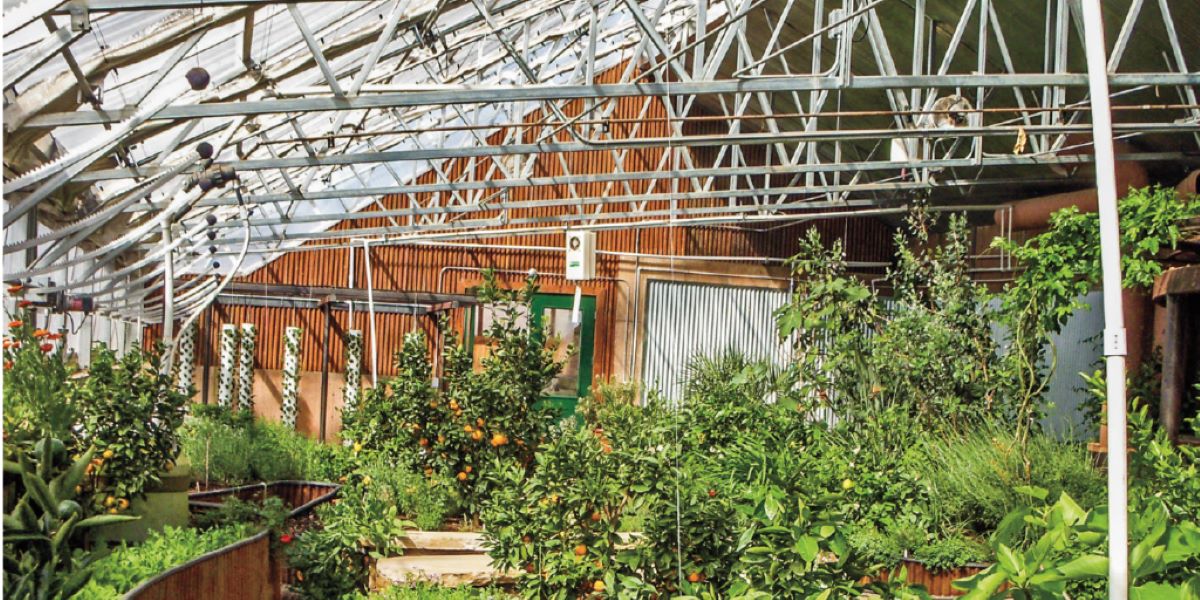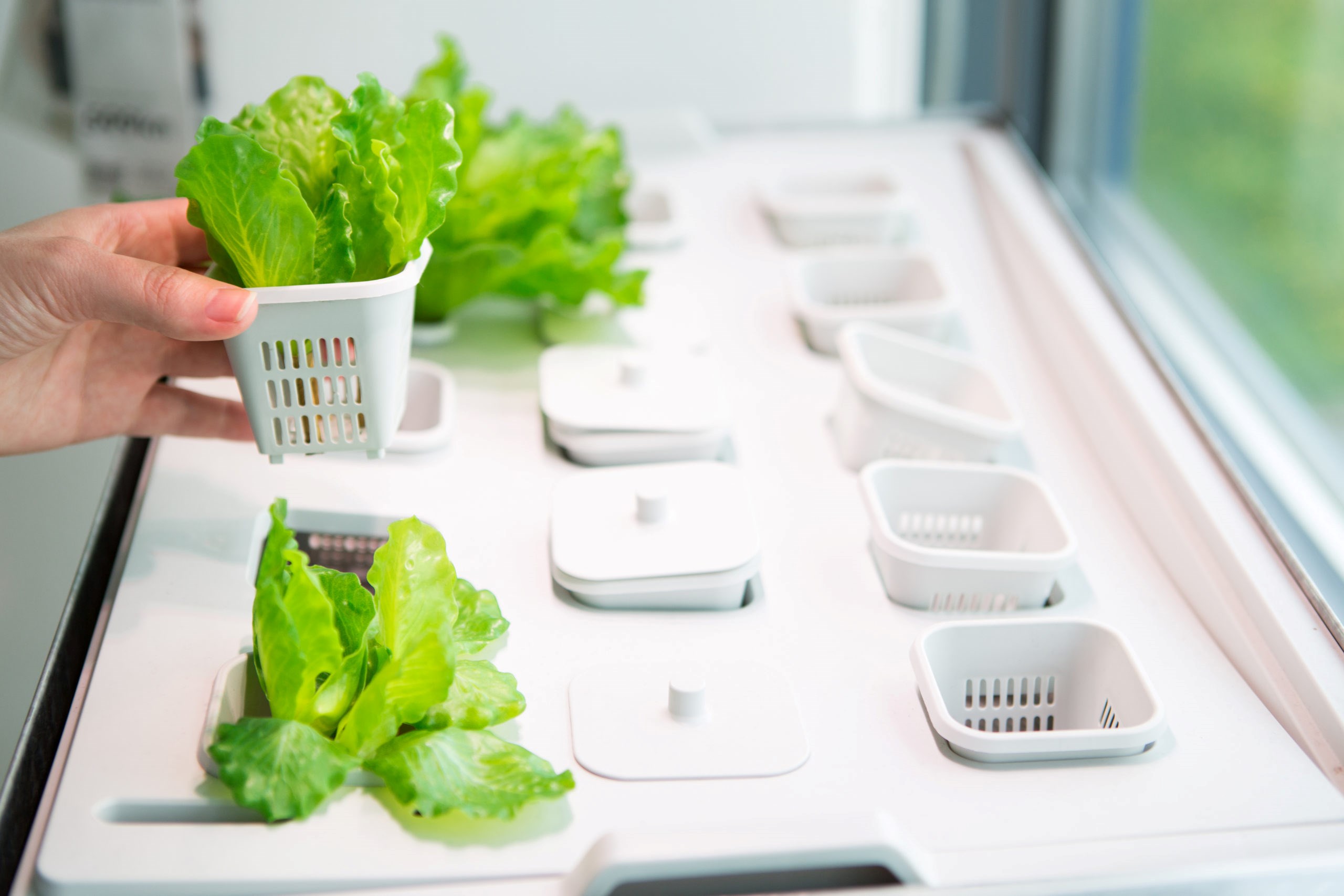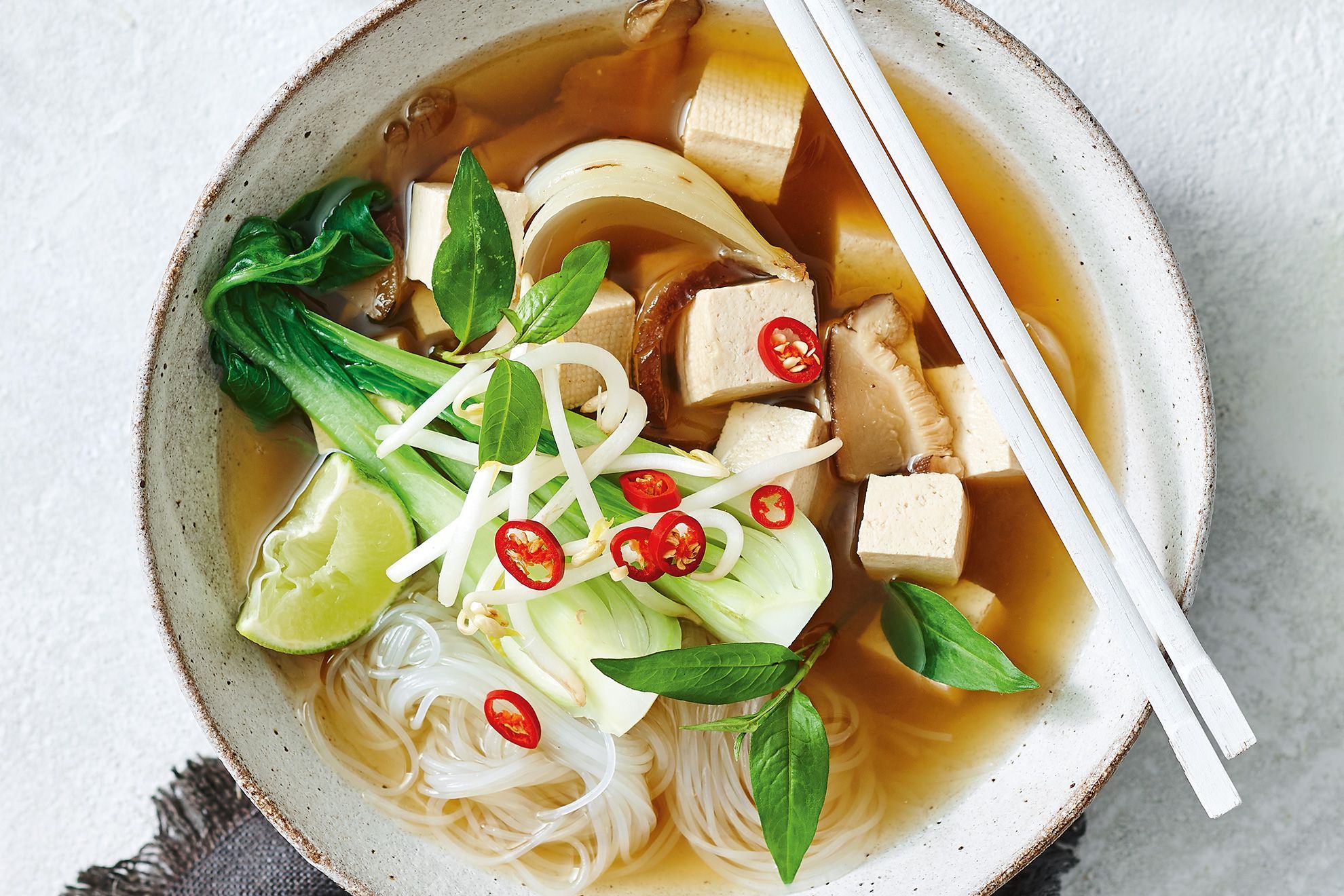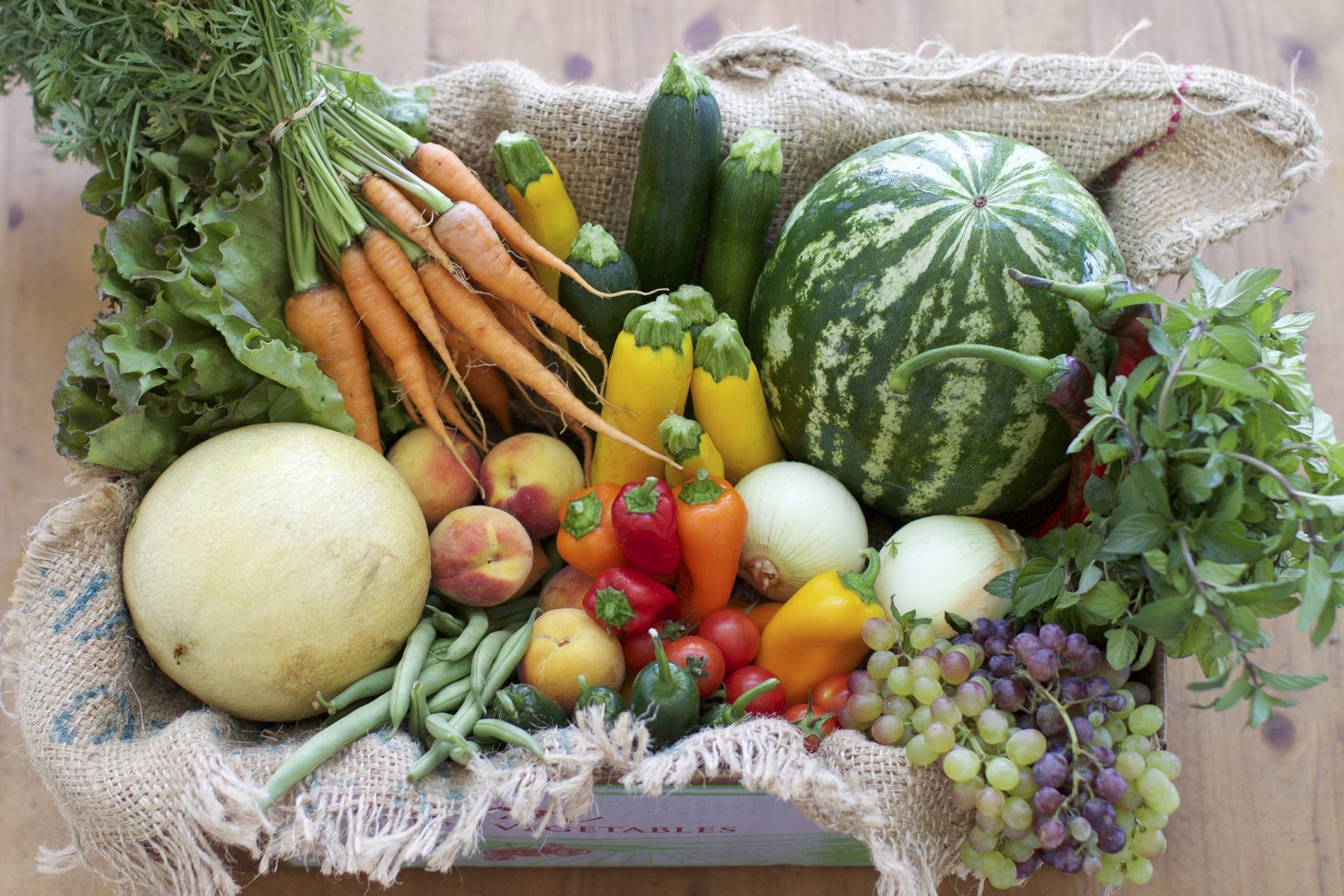Home>Types of Gardening>Edible Gardening>What Vegetables Need To Be Pollinated


Edible Gardening
What Vegetables Need To Be Pollinated
Modified: January 22, 2024
Learn about the importance of pollination in edible gardening and discover which vegetables require pollination for optimal growth and harvest.
(Many of the links in this article redirect to a specific reviewed product. Your purchase of these products through affiliate links helps to generate commission for Chicagolandgardening.com, at no extra cost. Learn more)
Table of Contents
Introduction
Welcome to the wonderful world of edible gardening! Whether you’re a seasoned gardener or just starting out, growing your own vegetables is a rewarding and sustainable endeavor. As you dive into the world of edible gardening, you’ll soon realize the critical role that pollination plays in the success of your vegetable plants.
Pollination is the process by which pollen is transferred from the male reproductive organ of a flower to the female reproductive organ, allowing for fertilization and the subsequent development of fruits and seeds. In nature, this process is often facilitated by pollinators such as bees, butterflies, birds, and other insects.
Understanding the importance of pollination is key to maximizing the productivity of your vegetable garden. Some vegetable plants are self-pollinating, which means they can fertilize themselves without the need for outside assistance. On the other hand, some vegetables rely on cross-pollination, where pollen is transferred between flowers of different plants of the same species.
In this article, we will explore the fascinating world of pollination in vegetable plants. We will discuss the differences between self-pollinating and cross-pollinating vegetables, techniques for hand pollination, common pollinators found in vegetable gardens, and the benefits of attracting pollinators to your garden.
So, grab your gardening gloves and get ready to delve into the wonderful world of vegetable plant pollination!
Importance of Pollination in Vegetable Plants
Pollination is a crucial process for the successful reproduction of vegetable plants. It not only allows for the formation of fruits and seeds but also ensures genetic diversity and healthy plant growth. Without proper pollination, your vegetable garden may produce fewer fruits or even fail to produce any at all.
One of the primary benefits of pollination is the fertilization of the female part of the flower, known as the stigma. The pollen, which contains the male reproductive cells, needs to be transferred to the stigma for fertilization to occur. This fertilization leads to the development of fruits, such as tomatoes, cucumbers, and peppers, which are essential components of a bountiful vegetable harvest.
Pollination also promotes genetic diversity in vegetable plants. When different plants of the same species cross-pollinate, their genetic material combines, resulting in offspring with diverse characteristics. This natural variation is crucial in plant populations as it increases resilience and adaptability to environmental changes.
In addition to fruit production and genetic diversity, pollination plays a crucial role in the overall health and growth of vegetable plants. The process of pollination triggers hormonal responses within the plants, stimulating root and shoot development, as well as overall plant vigor. Furthermore, pollination can enhance resistance to diseases and pests, ensuring the longevity and productivity of your vegetable garden.
It is important to note that not all vegetable plants rely on external pollinators for their reproduction. Some plants are self-pollinating, meaning they have both male and female reproductive organs within the same flower. These plants, such as beans, peas, and tomatoes, are able to transfer pollen within their own flowers, ensuring successful fertilization without the need for external assistance.
On the other hand, some vegetable plants, including cucumbers, squash, and melons, require cross-pollination. Cross-pollination occurs when pollen is transferred between flowers of different plants of the same species. In these cases, the assistance of pollinators, such as bees and butterflies, is crucial for transferring pollen from the male flower to the female flower.
In the next sections, we will explore self-pollinating and cross-pollinating vegetables in more detail and discuss techniques for hand pollination to maximize the yield of your vegetable garden.
Self-Pollinating Vegetables
Self-pollinating vegetables have the remarkable ability to reproduce and set fruits without the assistance of external pollinators. These plants have both male and female reproductive organs within the same flower, allowing for the transfer of pollen within the flower itself. This efficient process ensures successful fertilization and fruit development.
One popular example of a self-pollinating vegetable is the tomato. Tomato plants have what is known as a “perfect flower,” meaning it contains both the male stamens, which produce pollen, and the female pistil, which receives the pollen for fertilization. As the tomato plant grows, it develops clusters of yellow flowers that eventually transform into delicious ripe fruits.
Another self-pollinating vegetable is the bean. Beans have both the male and female flower parts contained within each flower. As the bean plant grows, it produces beautiful flowers that are pollinated by the transfer of pollen from the stamen to the pistil. This process ensures the development of bean pods that are ready for harvest when they mature.
Peas are also self-pollinating vegetables. Pea flowers have a unique structure that encloses both the male and female parts. When the pea plant blooms, pollen from the stamen naturally makes contact with the stigma within the flower, leading to fertilization and the development of pea pods. Harvesting peas at the right time ensures that the pods are sweet and tender.
Self-pollinating vegetables offer the advantage of being able to set fruit with little to no external intervention. However, it is important to note that even though these plants are self-sufficient, they can still benefit from the presence of pollinators in the garden. Bees and other insects visiting the flowers can help with the transfer of pollen, resulting in higher yields and better-quality fruits.
To maximize the productivity of self-pollinating vegetables, it is essential to provide a conducive environment for pollination. This includes ensuring adequate sunlight, proper watering, and, if necessary, gentle shaking of the plant to aid in pollen transfer. With the right care, self-pollinating vegetables can thrive in your garden and provide you with a bountiful harvest.
Now that we have explored self-pollinating vegetables, let’s dive into the world of cross-pollination and discover which vegetables require help from external pollinators for successful fruit development.
Vegetables that Require Cross-Pollination
While some vegetable plants have the ability to self-pollinate, others rely on cross-pollination for successful fruit development. Cross-pollination occurs when pollen is transferred between flowers of different plants of the same species. This process requires the assistance of pollinators, such as bees, butterflies, and other insects, to transfer pollen from the male flower to the female flower.
One example of a vegetable that requires cross-pollination is the cucumber. Cucumbers have separate male and female flowers on the same plant, and pollination occurs when pollen from the male flower is transferred to the stigma of the female flower. Bees, attracted by the fragrant and nectar-rich flowers, play a crucial role in the cross-pollination of cucumbers. Without the help of bees, the cucumbers may fail to develop fully or may have misshapen fruits.
Squash is another vegetable that relies on cross-pollination. Just like cucumbers, squash plants have separate male and female flowers. Insects, especially bees, are essential for transferring pollen from the male flower to the female flower, leading to successful fruit development. Without cross-pollination, the squash plants may produce fewer fruits, and the fruits themselves may be smaller or misshapen.
Melons, such as watermelons and cantaloupes, also require cross-pollination for optimal fruit production. These vine crops have male and female flowers on separate plants, making the assistance of pollinators crucial for transferring pollen. Bees are the main pollinators for melons, and their activity in the garden helps ensure that the female flowers receive the necessary pollen for fruit set. Without cross-pollination, melon plants may produce fewer fruits or fruits that are smaller in size.
When growing vegetables that require cross-pollination, it is important to provide a habitat that attracts pollinators. Creating a pollinator-friendly garden involves planting a variety of flowers, having a source of water, and avoiding the use of harmful pesticides. By providing a welcoming environment for pollinators, you increase the chances of successful cross-pollination and ultimately, a higher yield of well-formed fruits.
In some cases, it may be necessary to take measures to ensure cross-pollination when natural pollinators are not abundant. This can be done through techniques such as hand pollination, which involves manually transferring pollen from the male flower to the stigma of the female flower. We will discuss hand pollination techniques in the next section, allowing you to take control of the pollination process and maximize the fruit production of cross-pollinating vegetables.
Techniques for Hand Pollination
Hand pollination is a valuable technique that can be used to ensure successful fruit set in vegetable plants that require cross-pollination. This method involves manually transferring pollen from the male flower to the stigma of the female flower, mimicking the natural process of pollination facilitated by insects. Hand pollination is particularly beneficial when natural pollinators are scarce or when you want to have more control over the pollination process.
To perform hand pollination, you’ll need to identify the male and female flowers of the plant. Male flowers typically have a slender stem and a prominent stamen, which contains the pollen. Female flowers, on the other hand, have a tiny fruit attached to the base of the flower and a stigma, which is where the pollen needs to be transferred.
To collect pollen from the male flower, you can use a small brush or even your finger. Gently brush the stamen to collect the pollen grains. It is essential to handle the flowers delicately to avoid damaging or detaching them from the plant.
Once you have collected the pollen, carefully transfer it to the stigma of the female flower. Gently rub the stigma with the collected pollen, ensuring that it comes into contact with the sticky surface. This transfer mimics the natural process of pollination and facilitates fertilization.
When performing hand pollination, it is crucial to consider the timing of the process. Most vegetable plants have a specific window of time during which the flowers are receptive to pollen. In general, you’ll want to perform hand pollination in the early morning when the flowers are fully open and the pollen is most abundant.
Some vegetables, like cucumbers and squash, may benefit from bagging or covering the female flower after hand pollination to prevent unwanted cross-pollination from occurring. This practice ensures that the fruits produced are a result of the intentional hand pollination and not accidental pollination from other plants.
Hand pollination can be a fun and rewarding task in your vegetable garden. It allows you to take an active role in ensuring successful fruit development and can be particularly beneficial when natural pollinators are limited. By mastering the technique of hand pollination, you can overcome any pollination challenges and increase the yield and quality of your cross-pollinating vegetables.
Now, let’s explore the role of pollinators in vegetable gardens and discover the common allies that play a crucial role in the pollination process.
Common Pollinators for Vegetable Plants
Pollinators are the unsung heroes of the vegetable garden. These hardworking creatures play a crucial role in transferring pollen from the male flower to the female flower, ensuring the successful pollination and fruit development of many vegetable plants. Understanding the common pollinators in your garden can help you appreciate their role and take steps to attract and support them.
One of the most well-known pollinators is the honeybee. Honeybees are highly efficient pollinators and are attracted to a wide range of flowers, including those found in vegetable gardens. These industrious insects collect nectar and pollen from flowers and inadvertently pick up and transfer pollen as they move from one flower to another. Their fuzzy bodies help hold onto the pollen, increasing the chances of successful pollination.
Bumblebees are also important pollinators for many vegetable plants. These larger, robust bees create a buzzing sound as they fly from flower to flower, collecting and transferring pollen in the process. Bumblebees are particularly effective in pollinating tomato plants, among others. They have the strength to vibrate their bodies, effectively releasing pollen from the flower’s stamens.
Other native bees, such as mason bees and carpenter bees, contribute to the pollination of vegetable plants as well. These solitary bees often have specific flower preferences and nesting habits, making them valuable pollinators for certain vegetable crops. Providing nesting sites, such as bee houses or undisturbed areas of your garden, can help support these native pollinators.
Butterflies also play a role in pollination, albeit to a lesser extent than bees. These colorful insects are attracted to a variety of flowers and can inadvertently transfer pollen as they feed on nectar. Butterflies are particularly attracted to plants with brightly colored, fragrant flowers, such as butterfly bushes or milkweed. Including these plants in your vegetable garden can help attract and support butterflies.
Other insects, such as beetles and flies, can also contribute to pollination, although they are generally less efficient than bees and butterflies. These insects are often attracted to flowers with strong odors and may inadvertently transfer some pollen as they feed on nectar or other floral resources.
Creating a pollinator-friendly garden is essential to attract and support these important allies. Planting a diverse assortment of flowers that bloom throughout the growing season provides a continuous source of food for pollinators. Incorporating native plants, which are well-adapted to the local environment, can be especially beneficial.
Avoiding or minimizing the use of pesticides is crucial to protecting pollinators. Pesticides, even those labeled as “bee-friendly,” can have negative effects on both bees and other pollinators. Instead, opt for natural pest control methods, such as companion planting and integrated pest management, which can help maintain a healthy balance in your garden.
By understanding and appreciating the common pollinators in your vegetable garden, you can take steps to create a welcoming habitat and ensure the successful pollination of your vegetable plants. Supporting these pollinators not only benefits your garden but also contributes to the overall health and biodiversity of the ecosystem.
Now that we’ve explored the important role of pollinators, let’s dive into the benefits of attracting them to your vegetable garden.
Benefits of Attracting Pollinators to Your Vegetable Garden
Having a diverse array of pollinators in your vegetable garden offers numerous benefits to both your plants and the overall ecosystem. By creating an environment that attracts and supports pollinators, you can enhance the health, productivity, and sustainability of your garden.
Increased Pollination: The primary benefit of attracting pollinators is the significant boost in pollination. Bees, butterflies, and other insects play a crucial role in transferring pollen from the male flowers to the female flowers, facilitating fertilization. This results in a more abundant fruit set and higher yields in your vegetable plants. Increased pollination leads to larger, healthier, and more uniform fruits.
Better Crop Quality: The presence of pollinators improves the quality of your harvest. Proper pollination ensures the development of well-shaped, fully formed, and more uniform fruits. For example, cucumbers that are properly pollinated tend to have a straighter shape, while zucchini squash that receives adequate pollination results in larger and more flavorful fruits.
Promotes Genetic Diversity: Attracting pollinators to your vegetable garden promotes genetic diversity. When pollinators transfer pollen between different plants, it leads to cross-pollination and the merging of genetic material. This genetic diversity is crucial for the long-term health and adaptability of plant populations. It also increases the chances of developing new and improved varieties of vegetables.
Increased Biodiversity: A garden filled with pollinators is a sign of a healthy and biodiverse ecosystem. Attracting bees, butterflies, and other pollinators to your garden helps support a wide range of other beneficial insects and wildlife. This creates a balanced ecosystem where predators and pests naturally regulate each other, reducing the need for chemical pesticides.
Environmental Stewardship: By attracting pollinators to your garden, you contribute to the conservation of these important species. Bees and other pollinators are facing numerous challenges in their survival, including habitat loss and pesticide use. By providing a safe and nourishing habitat for pollinators, you actively participate in their conservation efforts and contribute to the overall well-being of our planet.
Educational Opportunities: Having pollinators in your garden also provides educational opportunities, especially for children. Observing the intricate dance between pollinators and flowers can inspire curiosity and awe for the natural world. It offers an excellent opportunity to teach the importance of biodiversity, ecology, and the interconnectedness of all living beings.
To attract pollinators to your vegetable garden, focus on creating a pollinator-friendly habitat. Plant a variety of flowering plants that provide nectar and pollen throughout the growing season. Incorporate native plants that are well-suited for the local climate and provide a diverse range of flower shapes and colors to attract different pollinators.
Offer water sources, such as shallow dishes or birdbaths, for pollinators to drink from. Provide nesting sites by leaving some areas of your garden undisturbed, creating nesting spots for bees and butterflies. Avoid using chemical pesticides and opt for natural pest control methods to protect both pollinators and other beneficial insects.
By attracting and supporting pollinators in your vegetable garden, you enhance the overall health and productivity of your plants while contributing to the conservation of these important species. It’s a win-win situation for your garden and the environment.
Now that we’ve explored the benefits of attracting pollinators, let’s wrap up with a recap of the key points we’ve covered in this article.
Conclusion
In conclusion, pollination is a vital process for the successful reproduction and productivity of vegetable plants. Understanding the different types of pollination and the role of pollinators is crucial for any edible gardener. Self-pollinating vegetables, such as tomatoes and beans, have the ability to set fruit on their own, while cross-pollinating vegetables, like cucumbers, squash, and melons, rely on the assistance of bees, butterflies, and other pollinators for successful fruit development.
Hand pollination is a useful technique for ensuring fruitful harvests, particularly for cross-pollinating vegetables. By manually transferring pollen from the male flower to the stigma of the female flower, you can take control of the pollination process and increase yields. Creating a pollinator-friendly garden is essential to attract and support important pollinators such as bees, butterflies, and other insects. By planting a diverse range of flowers, providing nesting sites, and avoiding harmful pesticides, you can create a welcoming environment for pollinators to thrive.
Attracting pollinators offers numerous benefits to your vegetable garden, including improved pollination, better crop quality, and increased genetic diversity. It also contributes to the overall health and biodiversity of the ecosystem. By supporting these invaluable allies, you actively contribute to the conservation of pollinators and promote environmental stewardship.
Edible gardening is not only about growing your own vegetables; it’s about participating in the natural cycles of life and contributing to the well-being of the planet. By understanding the importance of pollination and taking steps to attract pollinators, you can enhance the productivity, diversity, and sustainability of your vegetable garden while forging a deeper connection with the natural world.
So, grab your gardening tools, embrace the power of pollination, and watch as your edible garden flourishes with bountiful harvests, thanks to the hard work of pollinators.










